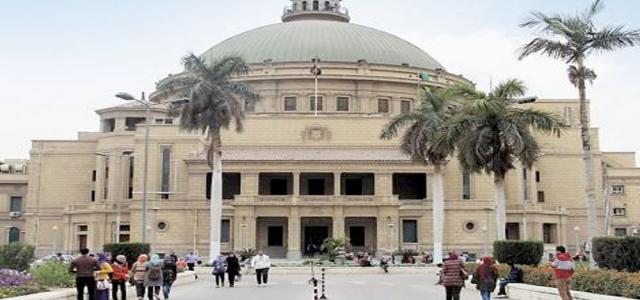As if they were on a date with a recurring crisis, the Egyptians began to suffer from the crisis of drowning roads. Still, it began this year early as rain and torrents in some coastal cities caused many roads to drown and close down, causing cities’ isolation and disrupting travellers.
Hurghada, Ras Ghareb Road in the Red Sea Governorate, was one of the most prominent roads that were closed due to its severe damage from heavy rain, amid the crowding of heavy transport vehicles and owners. Hundreds of families and truck drivers spent a difficult night on the road without services or breaks, forcing most of them to sleep in their cars, while some resorted to overnight stays in hotels in Ras Gharib. After the road was opened, motorists were surprised by the extent of the damage that the road suffered. One sank after the asphalt layer collapsed, although the rain fell for less than 30 minutes.
The rainfall caused a tourist bus to capsize on Hurghada Road, as the bus was washed off course by the water, and the Oil Rope area witnessed rainwater clearing a large number of cars and trucks. Photos and video clips circulating on social media showed that many roads in coastal cities were damaged by rain and traffic was disrupted, amid discontent over the crisis’ recurrence every year without government intervention. For its part, the General Traffic Department closed seven desert roads due to heavy rain, dusty winds, and lack of visibility, to prevent any accidents.
Roads flooded
Every year, coinciding with the winter season in Egypt, accidents and human disasters are repeated on the roads, despite government announcements that they are ready for the rainy season. The government always announces it is raising the maximum level of preparation, declaring an emergency in the governorates, clearing sewers in preparation for the winter season, and in conjunction with meteorological warnings of rain.
However, reality comes to reveal the exact opposite, and in a repeated scene, cities and roads are flooded with the first tests of winter, which is still in the stage of knocking on the doors. Soon, the officials’ statements are changed and turn into justification, promises, and even declarations of inability to confront a natural phenomenon that recurs every year. The strange thing is that among the flooded roads last year were newly constructed roads that cost billions of pounds, but they sank and were destroyed a few months after their opening, such as the regional road and the New Cairo-Ain Sokhna road.
In October of last year, the Minister of Transport, Kamel al-Wazir, said that the new roads, including the regional ring, are secured and able to withstand torrential rain with pipes, longitudinal and transverse inclinations, and water collection. The minister explained the collapse of the road at the time due to the unexpected direction of the rain. For its part, the Ministry of Irrigation confirmed that there is no rain drainage network in Egypt’s cities, including the capital, Cairo, explaining that the existing cities were planned without this network, given that Egypt is one of the dry countries. The ministry explained that the cost of establishing a separate network for rain drainage costs billions of pounds and added that the government’s financial capabilities did not allow this.
Failed and worn out
For his part, Adel Hassan Zaki, head of the Cairo Sewerage Company, confirmed in press statements that the sewage network is worn out, as this network is 105 years old, and it was established in 1914. He pointed to the sewage networks’ weakness to absorb rain and floods if they exceed their capabilities, saying that the sewage network in the capital can withstand rains of up to four millimetres in intensity. He added that if the rain exceeds the four-millimetre barrier, the network will not be able to absorb it, and the company resorts to cutting drinking water for citizens to create a space within the network that absorbs rainwater.
The administrative prosecution had investigated Heliopolis’ sinking in October 2019 to find out the technical and objective reasons that led to the crisis. The investigations concluded that there was a serious malfunction in the sewage system, a shortage of sewage cars, in addition to the slow-moving devices towards places where water collects. In turn, MP Muhammad Faraj Amer said that the government’s policies are failing and all the experiments it did to confront the rains and floods were for media propaganda only.





Recent Comments